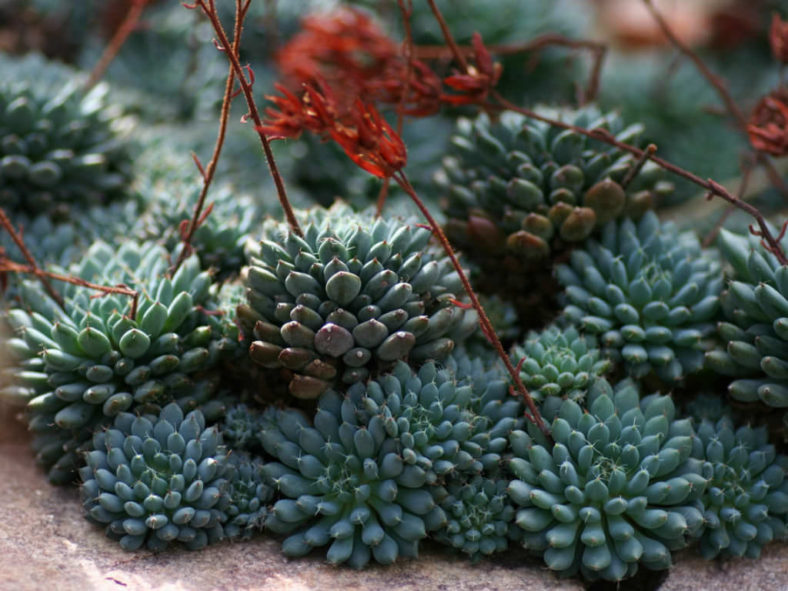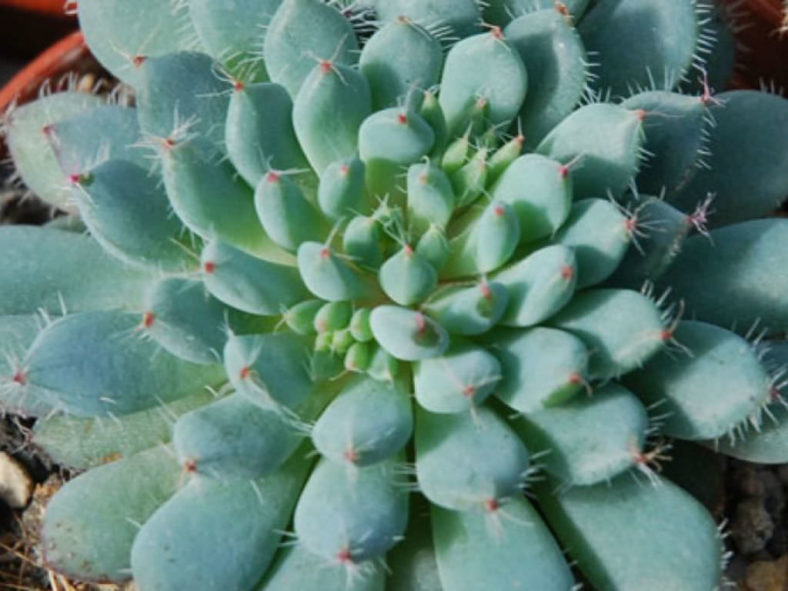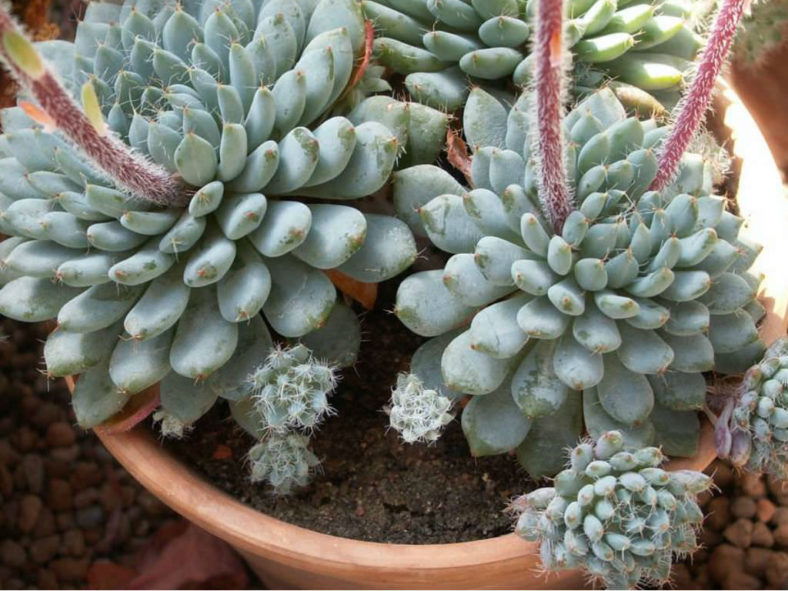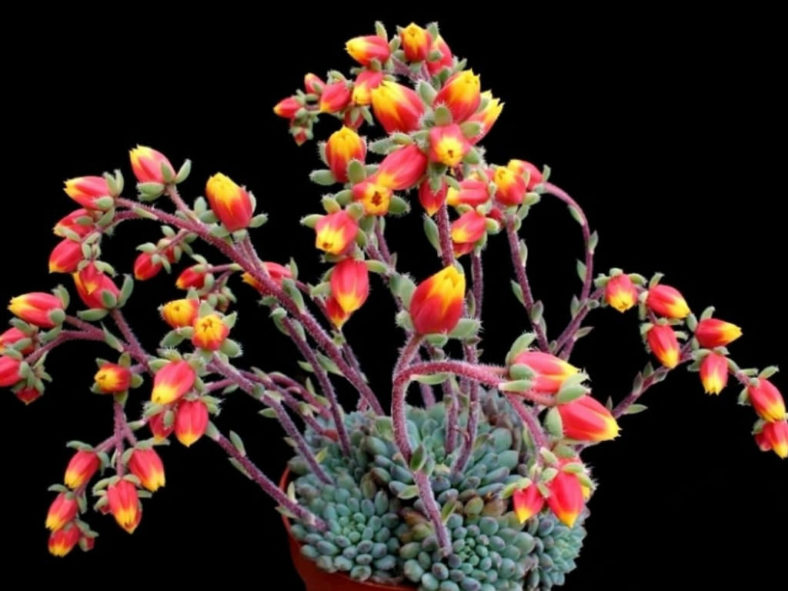Scientific Name
Echeveria setosa var. deminuta J. Meyrán
Common Name(s)
Firecracker Plant
Synonym(s)
Echeveria rondelii
Scientific Classification
Family: Crassulaceae
Subfamily: Sempervivoideae
Tribe: Sedeae
Genus: Echeveria
Etymology
The varietal epithet "deminuta" (pronounced "dee-MIN-yoo-tuh") means "diminished, lessened, reduced" and refers to the smaller size of the rosettes of this variety compared to the other varieties of the same species.
Origin
Echeveria setosa var. deminuta is native to Mexico. It grows in rocky soil in the Sierra Mixteca mountains in Oaxaca.
Description
Echeveria setosa var. deminuta is an attractive succulent that forms small rosettes of club-shaped, blue-green leaves with few white bristles, typically arranged in a tuft at the tip but sometimes also scattered on the margins, keel, or elsewhere on the dorsal surface. The rosettes can reach a diameter of 2.8 inches (7 cm), but are usually smaller. They produce an abundance of new offsets each season, forming a dense clump over time.
When blooming, the bright red flowers with yellow tips contrast nicely with the blue-green leaves. In the summer, the flowers appear in clusters on leafy, smooth to moderately hairy stalks that can grow up to 6.4 inches (16 cm) tall.

Hardiness
USDA hardiness zones 9b to 11b: from 25°F (-3.9°C) to 50°F (10°C).
How to Grow and Care
Most common Echeveria species are not complicated succulents to grow, provided you follow a few basic rules. First, be careful never to let water sit in the rosette as it can cause rot or fungal diseases that will kill the plant. Additionally, remove dead leaves from the bottom of the plant as it grows. These dead leaves provide a haven for pests, and Echeverias are particularly susceptible to mealybugs. Finally, as with all succulents, maintaining careful watering habits and providing ample light will help ensure success.
Most Echeveria can be easily propagated from leaf cuttings, although a few are better from seeds or stem cuttings. To propagate a leaf cutting, place the individual leaf in a succulent or cacti mix and cover the dish until the new plant sprouts.
Repot as needed, preferably during the warm season. To repot a succulent, ensure the soil is dry before repotting, then gently remove the pot.
See more at How to Grow and Care for Echeveria.
Cultivars
Links
- Back to genus Echeveria
- Succupedia: Browse succulents by Scientific Name, Common Name, Genus, Family, USDA Hardiness Zone, Origin, or cacti by Genus
Photo Gallery
Click on a photo to see a larger version.


